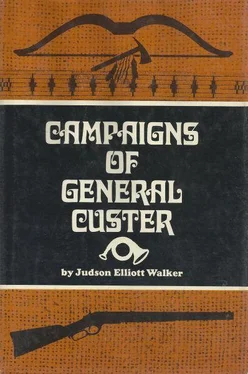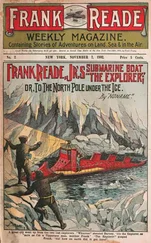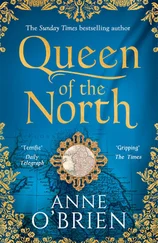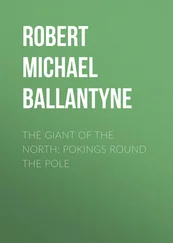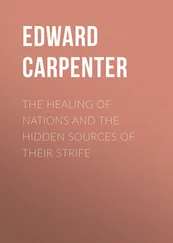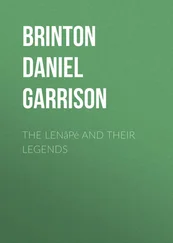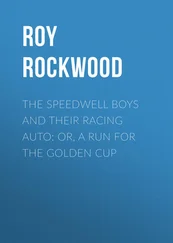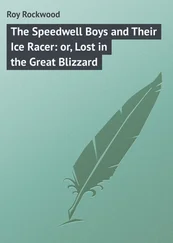Walker Array - Campaigns of General Custer in the North-west, and the final surrender of Sitting Bull
Здесь есть возможность читать онлайн «Walker Array - Campaigns of General Custer in the North-west, and the final surrender of Sitting Bull» весь текст электронной книги совершенно бесплатно (целиком полную версию без сокращений). В некоторых случаях можно слушать аудио, скачать через торрент в формате fb2 и присутствует краткое содержание. Жанр: Историческая проза, Исторические приключения, Приключения про индейцев, на английском языке. Описание произведения, (предисловие) а так же отзывы посетителей доступны на портале библиотеки ЛибКат.
- Название:Campaigns of General Custer in the North-west, and the final surrender of Sitting Bull
- Автор:
- Жанр:
- Год:неизвестен
- ISBN:нет данных
- Рейтинг книги:5 / 5. Голосов: 1
-
Избранное:Добавить в избранное
- Отзывы:
-
Ваша оценка:
- 100
- 1
- 2
- 3
- 4
- 5
Campaigns of General Custer in the North-west, and the final surrender of Sitting Bull: краткое содержание, описание и аннотация
Предлагаем к чтению аннотацию, описание, краткое содержание или предисловие (зависит от того, что написал сам автор книги «Campaigns of General Custer in the North-west, and the final surrender of Sitting Bull»). Если вы не нашли необходимую информацию о книге — напишите в комментариях, мы постараемся отыскать её.
Campaigns of General Custer in the North-west, and the final surrender of Sitting Bull — читать онлайн бесплатно полную книгу (весь текст) целиком
Ниже представлен текст книги, разбитый по страницам. Система сохранения места последней прочитанной страницы, позволяет с удобством читать онлайн бесплатно книгу «Campaigns of General Custer in the North-west, and the final surrender of Sitting Bull», без необходимости каждый раз заново искать на чём Вы остановились. Поставьте закладку, и сможете в любой момент перейти на страницу, на которой закончили чтение.
Интервал:
Закладка:
After ascending two more flights we found the door opening into Mr. Mulvany's studio. He seemed glad to receive a representative from the frontier, and more especially so on account of my coming from so near the scene exhibited on the canvas which hung upon the wall before me, covering a space of about 22X12 feet. He at once placed a chair for me to sit in at a distance of about thirty feet from the painting, and at the first glance my eyes were of course brought directly upon the soldierly and most natural-looking figure of " Major-General George A. Custer," with his huge revolver drawn in his right hand and at arms length, with his eye making a sure aim, which at once convinced me that at least one more painted and plumed warrior fell before his own time had come, which was no doubt then close at hand. On my right and just at Custer's left was the genial and noble-hearted Cook (Custer's Adjutant), in a half kneeling position, with his carbine drawn with deadly aim (and no doubt for the last time) on some one of the warriors who were just at this time making a fearful onslaught upon this heroic and lonely little band, all that were left of the brave three hundred after a most bitter and heart-rending, yet the most glorious defense that has ever been made in the world, or recorded in the annals of any history of civilized or Indian warfare. A few feet from Custer, on his left, lay the gallant Captain Yates, evidently just breathing his last, and over his body was a carbine just leveled by a bronze faced trooper wearing a fron-tierman's broad-brimmed hat, set one side of his head and a little back, with a blue army shirt on with sleeves rolled up, all of which presented a most life-like appearance, and a desperation that seemed to speak as loud and plain as words could speak- "Fll avenge the death of my brave cominander who has so nobly fought and bravely died before me." In casting my eyes to the rear of where Custer stood, and glancing around and over the semi-circle winrow of dead horses and men, all lying promiscuously and in pell-mell order, with now and then a dead Indian still clenching his carbine or spear with deathly grasp, we see nothing but one vast array of blood-thirsty warriors, making their final onslaught against the legion brave who had stood for hours so bravely and fought so nobly, and were now witnessing the life-blood of their brothers lave the field, who had already fallen before them. Onward the savage hordes are fast rushing, plunging their way through the clouds of smoke like so many mad-brained demons being driven into bedlam, mounted on their fleetest war-Jiorses, trampling over dead horses, dead troopers and dead Indians, whose copper-colored, naked skin (save that portion the breech clout covered) glistened as brilliant as the Chinese vermilion on their scrawny faces, painted in such a manner that bore positive evidence of a determination to annihilate every white man that by chance struck the buffalo trail on the Western plains.
The savage horde appear to be making this charge on a semi-circle line, all mounted and bedecked with gew-gaws, and heads dressed in the most costly war-bonnets, and tricked with plumes and eagles' feathers, with war-paint on their faces, and with carbine and spear in hand, all of which presents not only a most horrid, but a murderous and barbarous spectacle, but really a life-like picture of hostile savages, arrayed in a bold and unrelenting charge, which resulted in a most treacherous and heart-rending massacre.
As we left the studio our lips v/ere sealed in regard to the future course Mr. Mulvany is to pursue, and under a promise not to mention his whereabouts, as his painting is yet unfinished, and he cannot be annoyed with frequent visitors. He is arranging a very fine engraving of his painting, the size of which will be about 36X20 inches, and nicely framed. I saw one of his engravings he had just finished, and must frankly say that the intellectual features of all whom I had personally known, could not be more clearly and effectually set forth for the human eye to gaze upon. The eyes of " Cus-
ter and Cook " looking as clear and piercing as when they were on dress parade at Fort A. Lincoln, only a few months before the battle. Mr. Mulvany has certainly gained artistic repute to a very high degree, and his efforts must prove an immense success. He has been offered twenty-five thousand dollars for his painting alone. But we must be brief in this account, as it is against the orders of the artist to say anything special in connection with his studio, but we assume the same right that Mr. Whitman presumed to take, and will also produce his account of this wonderful work as it appeared in the New York Tribune, and following this will appear a memoriam by Judge J. S. Carvell, who was an old citizen on the frontier at the time, and personally knew the many good traits of Custer and the officers of s the Seventh Cavalry.
The writer places the following productions upon these pages to show that intense interest has been taken in different parts of the country in regard to this important campaign:
"CUSTER'S LAST RALLY."
BY MR. WALT WHITMAN, OF BOSTON.
I went to-day to see this just-finished painting by John Mulvany, who has been out in far Montana on the spot at the forts, and among the frontiersmen, soldiers and Indians, for the last two or three years, on purpose to sketch it in from reality, or the best that could be got of it. I sat for over an hour before the picture, completely absorbed in the first view. A vast canvas, I should say twenty or twenty-two feet by twelve, all crowded, and yet not crowded, conveying such a vivid play of color, it takes a little time to get used to it. There are no tricks; there is no throwing of shades in masses; it is all at first painfully real, overwhelming, needs good nerves to look at it. Forty or fifty figures, perhaps more, in full finish and detail, life-size, in the mid-ground, with three times that number, or more, through the rest-swarms upon swarms of savage Sioux, in their war-
T›onnets, frantic, mostly on ponies, driving through the background, through the smoke, like a hurricane of demons. A dozen of the figures are wonderful. Altogether a Western, autochthonic phase of America, the frontiers, culminating typical, deadly, heroic to the uttermost; nothing in the books like it, nothing in Homer, nothing in Shakespeare; more grim and sublime than either, all native, all our own, and all a fact. A great lot of muscular, tan-faced men brought to bay under terrible circumstances. Death a-hold of them, yet every man undaunted, not one losing his head, wringing out every cent of the pay before they sell their lives.
Custer (his hair cut short) stands in the middle with dilated eye and extended arm, aiming a huge cavalry pistol. Captain Cook is there, partially wounded, blood on the white handkerchief around his head, but aiming his carbine coolly, half kneeling (his body was afterwards found close by Custer's). The slaughtered or half-slaughtered horses, for breastworks, make a peculiar feature. Two dead Indians, lerculean, lie in the foreground clutching their Winchester rifles, very characteristic. The many soldiers, their faces and attitudes, the carbines, the broad-brimmed Western hats, the powder smoke in puffs, the dying horses with their rolling eyes almost human in their agony, the clouds of war-bonneted Sioux in the background, the figures of Custer and Cook, with, indeed, the whole scene, inexpressible, dreadful, yet with an attraction and beauty that will remain forever in my memory. With all its color and fierce action a certain Greek continence pervades it. A sunny sky and clear light develop all. There is an almost entire absence of the stock traits of European war pictures. The physiognomy of the work is realistic and Western.
I only saw it for an hour or so; but needs to be seen many times-needs to be studied over and over again. I could look on such a work at brief intervals all my life without tiring. It is very tonic to me. Then it has an ethic purpose below all, as all great art must have.
Читать дальшеИнтервал:
Закладка:
Похожие книги на «Campaigns of General Custer in the North-west, and the final surrender of Sitting Bull»
Представляем Вашему вниманию похожие книги на «Campaigns of General Custer in the North-west, and the final surrender of Sitting Bull» списком для выбора. Мы отобрали схожую по названию и смыслу литературу в надежде предоставить читателям больше вариантов отыскать новые, интересные, ещё непрочитанные произведения.
Обсуждение, отзывы о книге «Campaigns of General Custer in the North-west, and the final surrender of Sitting Bull» и просто собственные мнения читателей. Оставьте ваши комментарии, напишите, что Вы думаете о произведении, его смысле или главных героях. Укажите что конкретно понравилось, а что нет, и почему Вы так считаете.
